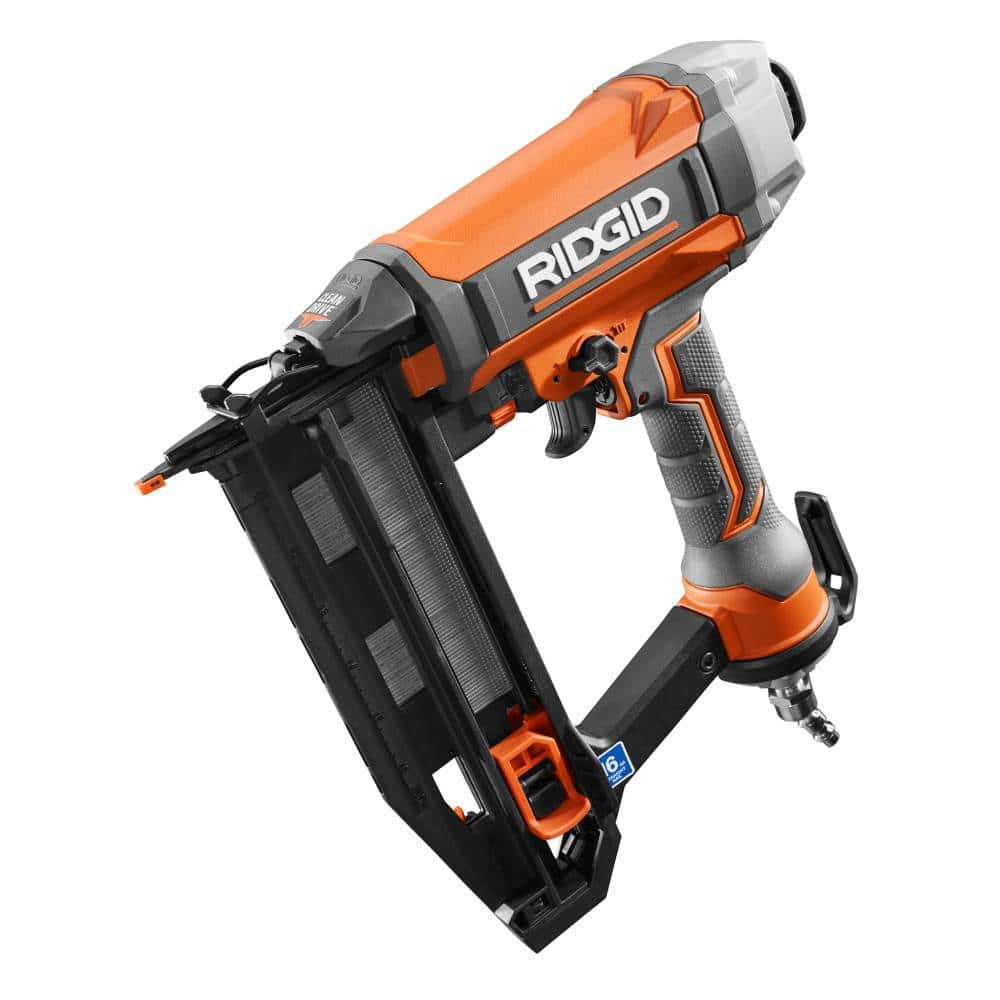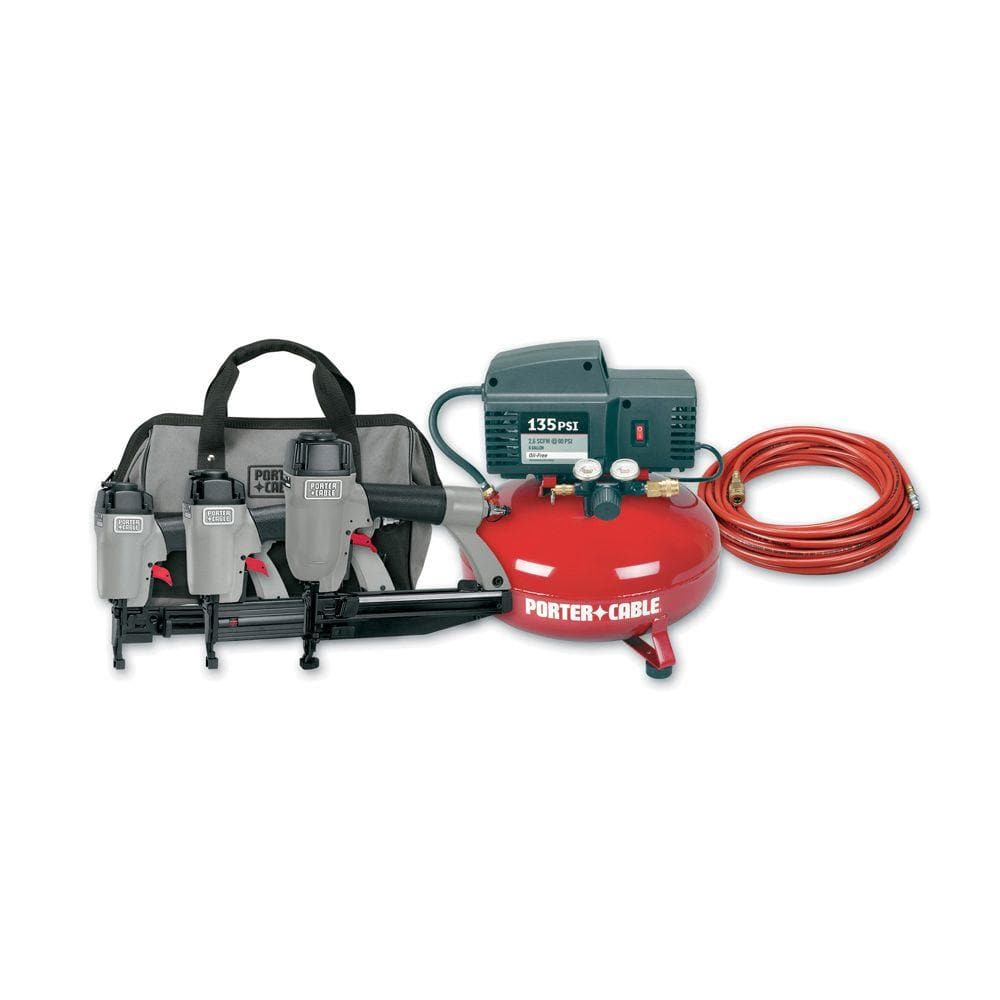Nail Gun Buying Guide

Last updated September 7, 2023
Completing any construction project with professional results requires using the best nail guns for the project at hand. Nailers drive fasteners below the surface of wood without denting or bashing to ensure a smooth, high-quality finish. This guide will cover the different types of nail guns to use for each project, as well as power types, motor types and more. The chart below will help you answer the question "What kind of nail gun do I need?"
Table of Contents
Power Types
Motor Types
Nail Gauge Options
Nail Gun Angles
Minimum Recommended Operating Pressure (PSI)
Minimum Recommended Air Delivery (CFM)
Power Types
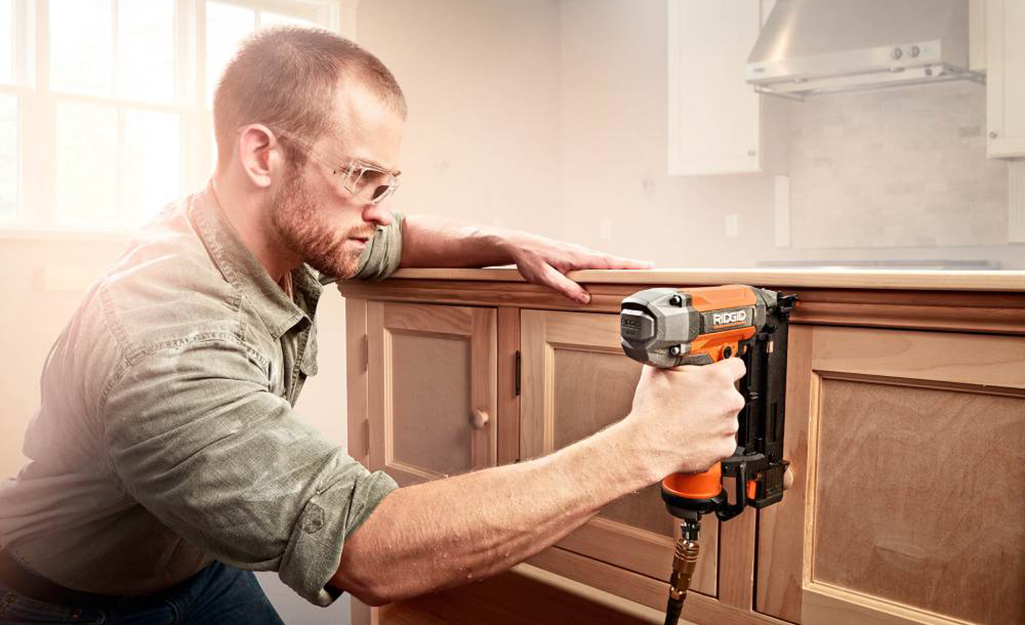
There are two types of firing modes:
- Bounce-fire triggers allow you to squeeze and hold them so you can fire a nail every time you touch, or bounce, the nose of the nailer to your work surface. This trigger may need to be installed separately.
- Sequential firing requires you to pull the trigger each time you fire a nail. This allows you time to set up the proper angle for the shot.
Tip:
Look for models with anti-jamming features and that direct air blasts away from your face for safe, comfortable use.
Motor Types
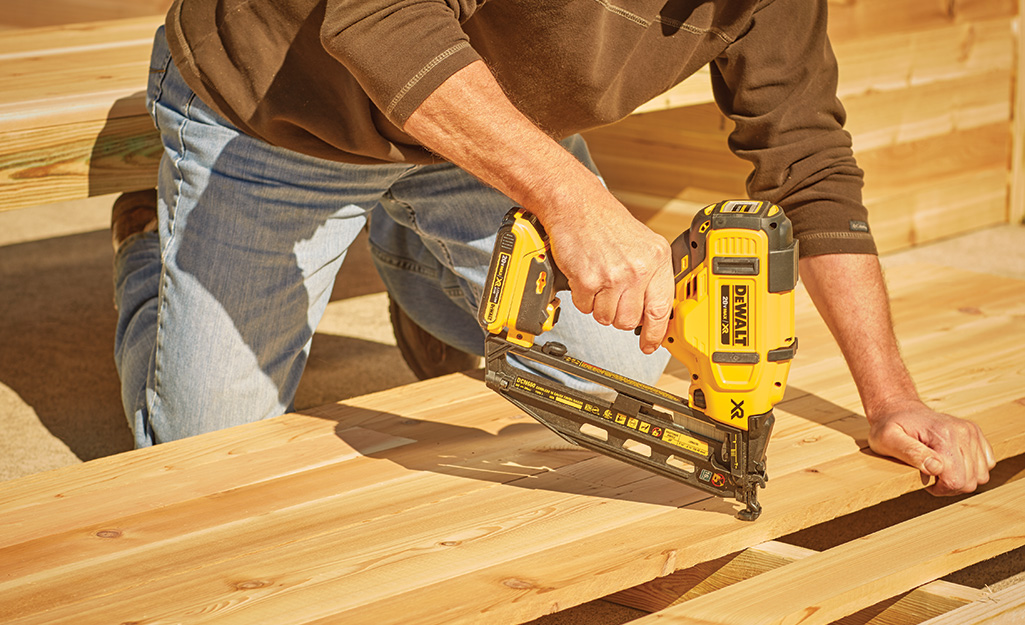
As you start to shop for a nail gun for your home, you'll find that there are two main motor types to choose between.
- Pneumatic: A pneumatic nail gun, or air nail gun, uses compressed air to power the nail gun. The most popular of all nail guns, pneumatic nail guns are a reliable choice for professionals because they offer incredible power and come in a variety of makes and models.
- Electric: Electric nail guns can be powered by an electrical cord or a battery pack, depending upon the tool you select. Cordless electric nail guns are easy to move around the job site without worrying about a cord or air hose. The benefit is that they are often more portable than a pneumatic nail gun. The drawback is that they aren't as powerful.
- Brushed or brushless: Motors can also be either brushed or brushless. Brushless motors are more powerful and durable than brushed motors, but they are often more expensive. An air gun with brushless motor will likely be the most powerful type of nail gun you can buy.
Nail Gauge Options
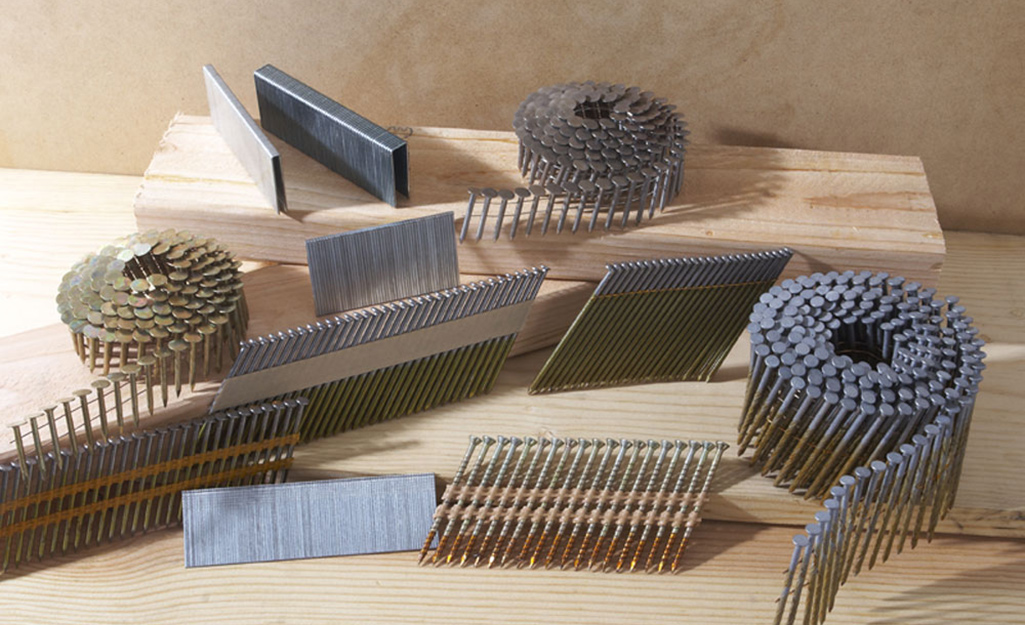
Once you've discovered the nail gun you'll add to your collection, you need to check the nail gun for what nail gauges it accommodates. Nail gauge sizes refer to the thickness of the nail. A higher gauge number means a thinner nail, while a lower gauge number means a thicker nail.
The most common nail gauge options for nail guns are:
- 15-Gauge
- 16-Gauge
- 18-Gauge
- 23-Gauge
16-gauge nails are the most versatile size, so a 16-gauge nail gun is a great option if you need it for many different projects. 15-gauge nails are most often used for installing thick trim. 18-gauge and higher-gauge nail guns are best used for fine detail work, furniture repair and thin trim work.
Nail Gun Angles
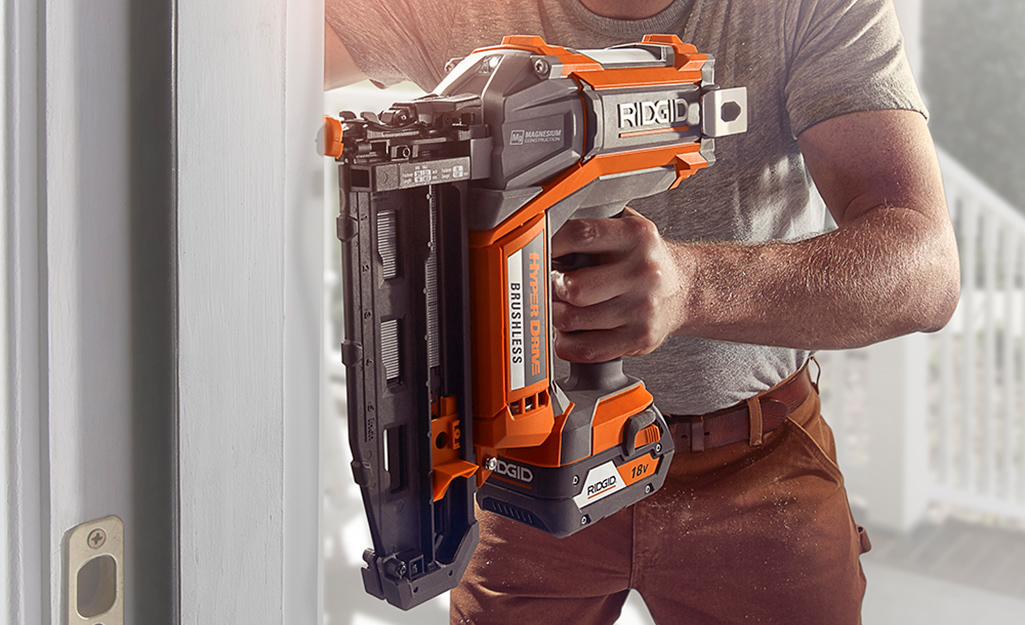
The nail gun angle refers to the nail collation angle, meaning the angle that the nails are collected and stored in the nail gun's magazine. The nail gun angle is not the slant by which the nail gun drives the nail. Nails are always driven straight into a surface.
Nail guns can offer anywhere from a 15-degree to a 34-degree angle. The angle will determine what type of nail heads and how many nails the nail gun can accomodate.
- 15-degree nail guns can hold a large number of full-round-head nails, which are ideal for floor joists, wall studs and other framing jobs. Full-round-head nails are often required for framing by building codes. 15-degree nail guns can be heavy, making overhead work difficult.
- 21-degree nail guns also accomodate full-round-head nails, but hold fewer than 15-degree nail guns.
The greater angle makes tight corners easier to access. Because they hold fewer nails, 21-degree nail guns are typically lighter than 15-degree nail guns. - 28-degree nail guns hold offset-head or clipped-head nails to save space in the magazine. They are a more compact tool than the previous angled nail guns, but not all building codes allow the use of offset-head or clipped-head nails in framing jobs.
- 30-degree nail guns provide the best access to tight corners. They also use offset-head or clipped-head nails. Their magazines often hold two strips of nails for less frequent reloading.
Minimum Recommended Operating Pressure (PSI)
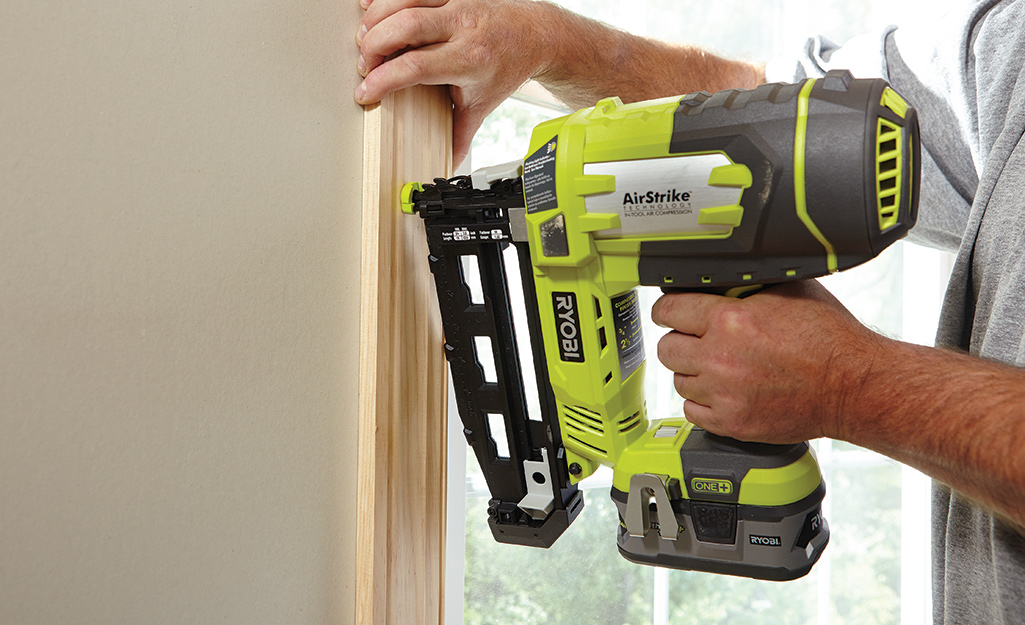
In general, the larger the nail, the more pressure is needed to drive the nail. As you browse the available options, look for the minimum recommended operating pressure for the tool. Most nailers will operate at a PSI between 70 and 120.
Minimum Recommended Air Delivery (CFM)
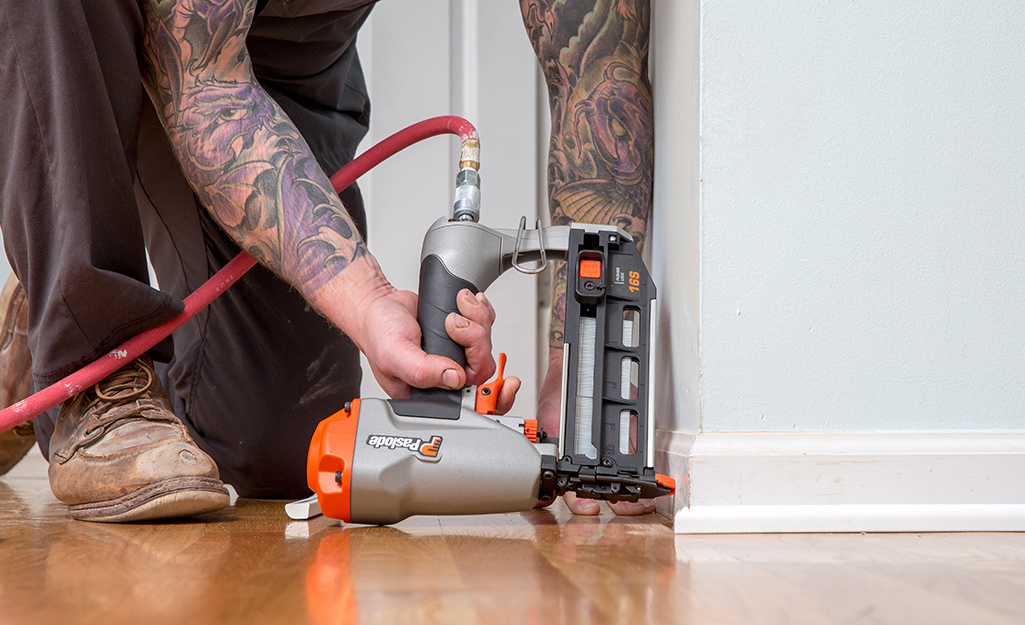
Pneumatic nailers use compressed air to drive the nails. The airflow is measured in CFM. Different types of nailers require a different CFM at 90 PSI. Knowing the CFM required by your tool will help you determine the proper air compressor to pair with the tool.
When searching for the best nail guns, keep in mind the different types of models, motors, gauges and angles. Each variation of nail gun will have its own benefits, depending on the types of jobs you need to complete. Need help identifying a type of nail gun or nail? Snap a photo and use image search in The Home Depot Mobile App. If you plan on using a nail gun just once, consider tool rental to get your project done. Use once, then bring it back - no maintenance required and you won’t need to store it either.


